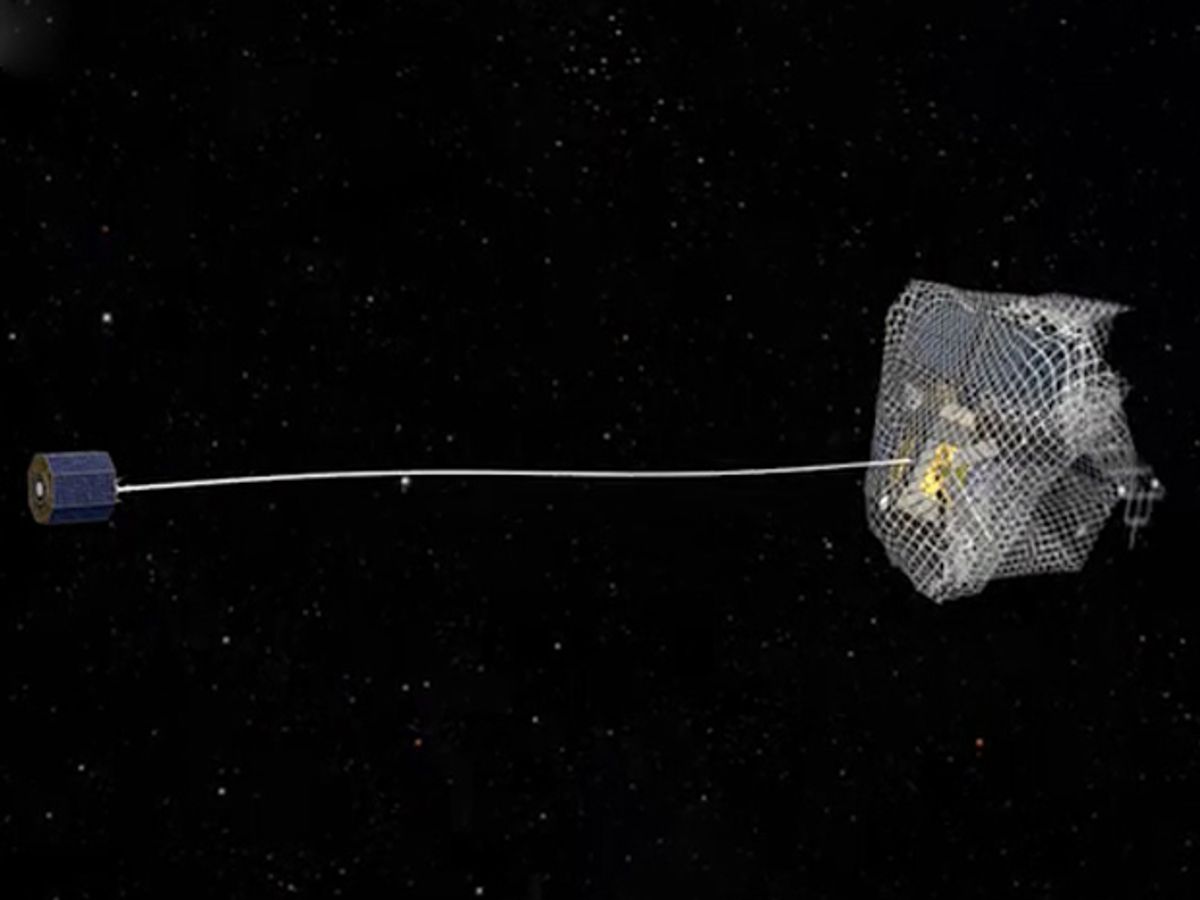Space junk is a serious problem, and not just in the movies. While avoiding the creation of space junk in the first place by designing spacecraft from the beginning to deorbit themselves is probably the most realistic long-term solution, the interim may require active measures to mitigate some of the trash that's already up there.
The European Space Agency has been developing a mission to capture and deorbit a piece of debris, and their latest test involves launching weighted anti-junk nets in microgravity.
For these tests, 20 nets of different designs (in rainbow colors to make them easier to see on videos) were fired at different speeds at a target using compressed air. To simulate weightlessness, each test was conducted inside a Falcon 20 jet as it accelerated towards the ground, which sounds like puke-inducing fun:
The net looks like it could be a great solution for capturing space debris that are relatively static; it offers the advantage of envelopment, making sure that bits and pieces don't fly off, forming even more dangerous junk, and ESA says the tests went so well that usually the nets had to be cut to pieces to get the off of the target.
At this point it’s difficult to tell how effective nets might be at dealing with satellites or other objects that are spinning rapidly (which can happen after collisions), since it seems like you might run the risk of ripping the net to shreds, breaking the tether, or even dragging the capturing satellite in and causing a new collision. The researchers seem optimistic, though: “The main advantage of the net option is that it can handle a wide range of target shapes and rotation rates,” explained ESA engineer Kjetil Wormnes.
Along with nets, the ESA is also exploring other techniques to deal with debris that may be more able to handle challenging situations, including harpoons, robot arms, and “tentacles.” The method that the ESA decides on will launch on its e.DeOrbit clean space test mission in 2021, with the goal of demonstrating that orbital cleanup techniques can work in practice: once the capturing satellite has the space trash in its clutches, it can either passively (using drag) or actively (using thrusters) deorbit itself to burn up in the atmosphere, hauling the trash along with it.
The e.DeOrbit mission is a good start, but 2021 is a ways away, and developing a system that can work on the massive scale that existing space debris requires (17,000 coffee-cup sized objects or larger and counting) is going to need a substantial amount of resources and a concerted effort to implement an effective solution before it’s too late.
Evan Ackerman is a senior editor at IEEE Spectrum. Since 2007, he has written over 6,000 articles on robotics and technology. He has a degree in Martian geology and is excellent at playing bagpipes.



